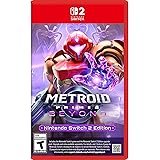The quest for an affordable, high-performance computer often feels like an uphill battle. Enthusiasts desire cutting-edge power, but budgets are sometimes restrictive. Finding the sweet spot between cost and capability is a common challenge for many. The video above dives into this very predicament. It showcases four experienced tech YouTubers attempting to build the ultimate $1000 gaming PC, predominantly from used parts. This direct competition illuminates various strategies and pitfalls, offering valuable lessons for anyone aiming to assemble a capable machine without breaking the bank.
The core concept was simple: each builder received a $1000 budget. Their goal was to assemble the best possible gaming rig. This competitive format offered a clear demonstration of how different approaches yield varied results. The builders were given access to a generous pile of secondhand components. These parts were priced according to typical online marketplace values. Marketplaces like Facebook, eBay, and Jawa were used for reference. The video provides a fascinating look into practical budget PC building.
The $1000 Challenge: Mastering the Budget Gaming PC Build
Building a $1000 gaming PC is a true test of skill. It demands meticulous planning and shrewd decision-making. Every dollar spent must be justified by performance gains. The contestants faced the difficult task of maximizing power within strict financial limits. A penalty system was also introduced. For every $10 spent over budget, a 1% score reduction was applied. This rule encouraged frugality and emphasized value.
The primary strategy involved leveraging the used parts market. This approach allows for significantly better components than a new-parts-only build. Deal hunting becomes an essential skill. Contestants sought out powerful CPUs and GPUs at discounted prices. This method can unlock performance levels usually found in more expensive systems. However, it also introduces certain risks and requires careful verification of components.
Component Deep Dive: CPUs and GPUs at $1000
The choice of CPU and GPU heavily influences a gaming PC’s performance. For a $1000 gaming PC, these two components typically consume the largest portion of the budget. Different contestants selected varied options. Danny opted for a Ryzen 5 7600, a solid choice for modern gaming. Tito, leaning heavily on price, picked a Ryzen 7 7900X. Zach went with a Ryzen 5 7600X, finding a strong deal. Joyce bravely chose a Ryzen 5 7600X3D, hoping for superior gaming performance from its advanced cache technology.
Graphics card selections also demonstrated diverse approaches. Danny secured an RX 6950 XT for around $500, a very powerful card for the budget. Zach found an RX 7800 XT for $450, another excellent value. Joyce chose an Nvidia card, hoping for ray tracing benefits. This highlights the ongoing AMD vs. Nvidia debate. Most builders understood that a significant portion of the budget should be allocated to the GPU. This is often the most critical component for achieving high frame rates in modern games.
The Supporting Cast: RAM, SSDs, and Cooling
Beyond the CPU and GPU, other components are vital for a balanced budget gaming PC. RAM, storage, and cooling all contribute to the overall user experience. One contestant, Tito, initially used only one stick of RAM. This can significantly hinder performance. Dual-channel memory configurations are always preferred for gaming. They provide a wider data pathway for the CPU, leading to smoother gameplay.
Storage choices also varied. Zach, prioritizing raw gaming performance, selected a “crappy SSD” to save money. This decision was strategic but controversial. A slow SSD affects load times and overall system responsiveness. It also poses data loss risks down the line. Cooling solutions were another consideration. Danny used a stock cooler, arguing against expensive aftermarket options for a budget build. This approach saves money for other components. However, more powerful CPUs might benefit from enhanced cooling to maintain optimal performance under heavy loads. The “jank” factor, such as a missing IO shield or a case without a side panel, can also appear with used parts. These issues, while sometimes minor, impact aesthetics and even cooling efficiency.
Navigating the Used Parts Market for Your Budget Gaming PC
The used parts market is a treasure trove for budget builders. However, it requires a careful approach. Bargains can be found on platforms like Jawa, eBay, and Facebook Marketplace. These marketplaces offer significant savings over new retail prices. But vigilance is key when purchasing secondhand components. Verifying seller reputation and product condition is essential. Ask for clear photos and detailed descriptions. Look for components with original packaging or proof of purchase if possible.
Deal hunting takes time and patience. Prices fluctuate, and good deals are snapped up quickly. Being ready to act fast is important. Sometimes, negotiation is possible, as demonstrated by Danny. He successfully bargained down a CPU price. Identifying the true market value of a component is crucial. This helps in making informed offers. The rewards of successful deal hunting can be substantial. It enables a more powerful $1000 gaming PC than otherwise possible.
Powering Your Build: The Heart of the System
A reliable power supply unit (PSU) is often overlooked. It is a critical component for any PC build, especially a budget gaming PC. All contestants were supplied with a Seasonic Focus GX 850 PSU. This choice highlighted the importance of a quality power delivery system. Seasonic is known for its reliability and performance. The Focus GX 850 is ATX 3.1 and PCIe 5.1 compliant. This ensures compatibility with the latest graphics cards. It is also 80 Plus Gold certified. This means high energy efficiency, reducing electricity costs and heat output. A 10-year warranty provides peace of mind. Investing in a good PSU safeguards your expensive components and ensures stable power delivery. This allows for consistent, optimal performance.
Aesthetics vs. Performance: The Eternal Debate
The balance between aesthetics and raw performance is a recurring theme in PC building. Zach, for instance, heavily focused on aesthetics for his build. He hoped for bonus points in that category. This strategy proved less impactful in the competition’s scoring. However, for many users, the visual appeal of a PC is important. A clean, well-lit interior or a unique case design enhances ownership satisfaction. Tito even embraced a “messy setup” as part of his build’s vibe, acknowledging the missing side panel as a cooling advantage.
Ultimately, a $1000 gaming PC prioritizes performance. Gamers want smooth frame rates and high resolutions. Aesthetics often come secondary to this core requirement. Yet, finding a visually pleasing build within budget is certainly achievable. It just requires more careful part selection. Sometimes a compromise is necessary. Danny’s winning strategy involved putting “a big chunk of money at the graphics card.” This decision ultimately proved performance is king in a gaming PC competition. Even Zach, despite his aesthetic focus, acknowledged Danny’s superior price-to-performance ratio.









